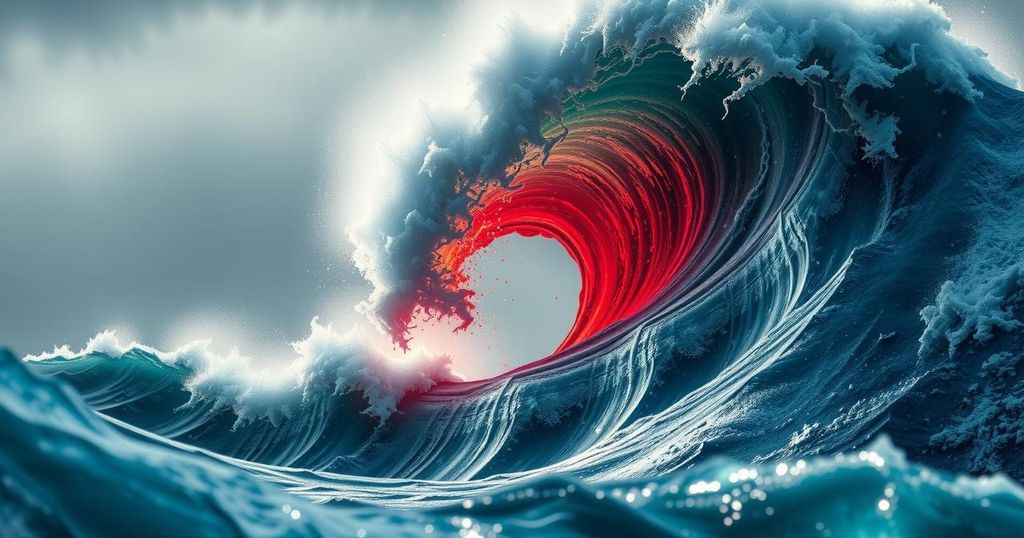A 6.9 magnitude earthquake struck off the coast of Japan, prompting a tsunami warning for the Pacific region. The quake occurred on Monday at around 9:19 p.m. local time, with one tsunami wave recorded at approximately 8 inches. Residents were advised to stay clear of coastal areas, while officials assess the extent of damage and potential safety risks due to debris.
On Monday morning, a significant earthquake with a magnitude of 6.9 struck the Pacific Ocean, primarily affecting Japan, which prompted the issuance of a tsunami warning across the Pacific region. The earthquake occurred at approximately 9:19 p.m. local time, with its epicenter located a few miles off the coast at a depth of around 19 miles, as reported by Japanese and American officials. In response, the Japanese weather agency alerted residents in Miyazaki and Kochi prefectures, predicting tsunami waves that could reach heights of about 1 meter. Authorities confirmed that one wave measured approximately 8 inches, impacting local coasts around 10 p.m. Residents were urged to stay clear of coastlines and waterways for their safety.
The earthquake marks a continuation of seismic activity observed in the United States, including a recent 7.0 magnitude quake that occurred in Northern California earlier this month, followed by other notable quakes across various states, including Alaska and parts of the Midwest and Ohio. As of now, the extent of damage caused by the earthquake in Japan remains undetermined; however, disruptions in public transportation have been reported, and officials are actively assessing the situation. Citizens have been cautioned to be vigilant regarding potential glass and debris resulting from the quake, while residents in certain areas of Kochi Prefecture were given evacuation directives.
Tsunamis are often triggered by underwater earthquakes, particularly those that occur along tectonic plate boundaries. The Pacific region is notable for its seismic activity, largely due to the presence of the Pacific Ring of Fire, where numerous earthquakes and volcanic eruptions occur. Awareness of tsunami warnings is crucial for safety, as they can result in significant coastal inundation, harming both life and property. Japan has historically been impacted by tsunamis, most notably the disaster following the Great East Japan Earthquake in 2011, which resulted in widespread devastation and loss of life. Monitoring systems and agencies are in place to warn the public of potential tsunami dangers, emphasizing preparedness in earthquake-prone regions.
In conclusion, the recent 6.9 magnitude earthquake in the Pacific Ocean has raised concerns due to its potential for triggering a tsunami, particularly affecting Japan’s coastal regions. While initial reports indicate minor wave heights, authorities continue to monitor the situation closely, advising residents to remain vigilant for safety. This seismic event is part of a broader pattern of earthquake activity in the United States and serves as a reminder of the persistent risks associated with natural disasters in vulnerable regions.
Original Source: www.newsbreak.com






